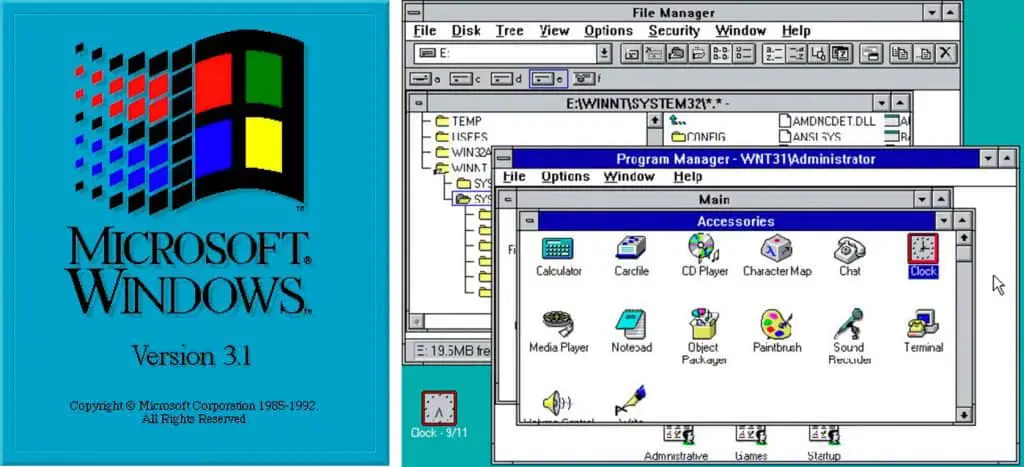Table of Contents
About
Windows 3.1 is a major release of Microsoft Windows. It was released to manufacturing on April 6, 1992, as a successor to Windows 3.0.
Like its predecessors, the Windows 3.1 series ran as a shell on top of MS-DOS. Codenamed Janus, Windows 3.1 introduced the TrueType font system as a competitor to Adobe Type Manager. Its multimedia was also expanded, and screensavers were introduced, alongside new software such as Windows Media Player and Sound Recorder. File Manager and Control Panel received tweaks, while Windows 3.1 also saw the introduction of Windows Registry and add-ons. Windows 3.1 was the last Windows 16-bit operating environment and it can run more RAM in comparison with its predecessors.
Microsoft also released special versions of Windows 3.1 throughout 1992 and 1993; in Europe and Japan, Windows 3.1 was introduced with more language support, while Tandy Video Information System received a special version, called Modular Windows. In November 1993, Windows 3.11 was released as a minor update, while Windows 3.2 was released as a Simplified Chinese version of Windows 3.1. Microsoft also introduced Windows for Workgroups, the first version of Windows to allow integrated networking. Mostly oriented towards businesses, it received network improvements and it allowed users to share files, use print servers, and chat online, while it also introduced peer-to-peer networking.
The series is considered to be an improvement on its predecessors. It was praised for its reinvigoration of the user interface and technical design. Windows 3.1 sold over three million copies during the first three months of its release, although its counterpart Windows for Workgroups was noted as a “business disappointment” due to its small amount of sold copies. It was succeeded by Windows NT 3.1 and Windows 95, and Microsoft ended the support for Windows 3.1 series on December 31, 2001, except for the embedded version, which was retired in 2008.
Development History
Windows 3.0, the predecessor of 3.1, was released in 1990, and is considered to be the first version of Windows to receive critical acclaim. Windows 3.0 received around 10 million sales before the release of Windows 3.1 on April 6, 1992. Microsoft began a television advertising campaign for the first time on March 1, 1992. The advertisements, developed by Ogilvy & Mather, were designed to introduce a broader audience to Windows.
Windows 3.1 was codenamed Janus. Like its predecessors, the operating environment runs as a shell on top of MS-DOS, although it does not include the MS-DOS Executive shell. After the introduction of Windows 1.0, Microsoft had worked on gaining support from companies to expand its operating environment on different types on PCs. Tandy Corporation was open to shipping Tandy Sensation PCs with the Windows 3.1 operating environment. IBM and its PCs were also provided with Windows 3.1.
System requirements
- 80286 processor for standard mode, 80386 or higher for enhanced mode. Windows for Workgroups - 386SX processor or higher.
- 1 MB of memory (640 KB of conventional memory). Windows for Workgroups - 3 MB of memory (640 KB of conventional memory)
- A hard disk with at least 6.5 MB of free space (8 MB for enhanced mode users), and at least one floppy disk drive. Windows for Workgroups - A hard disk with at least 8 MB of free space (14 MB needed for a complete installation), and at least one floppy disk drive.
- VGA adapter
- Optional hardware includes a Hayes, MultiTech, TrailBlazer, or any other compatible modem if user wants to connect to a network
- MS-DOS 3.1 or higher
- A Microsoft-compatible pointing device (mouse) is recommended, but not required
